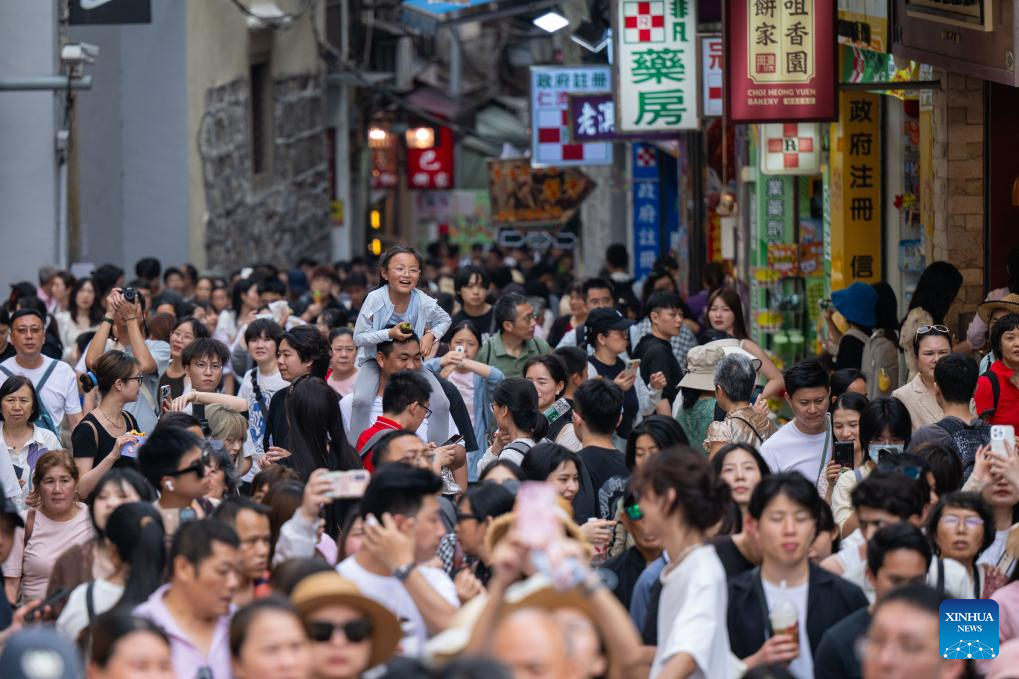
BEIJING - During the five-day Labor Day holiday, Chinese travelers took an estimated 314 million domestic trips, marking a 6.4 percent increase from the previous year.
Tourist spending also saw a notable rise, reaching 180.3 billion yuan (roughly $25 billion), an 8 percent year-on-year jump that highlights the sustained vitality of consumer activity.
The Labor Day holiday, running from May 1 to 5, is typically one of the busiest travel periods of the year. During this time, millions of Chinese travelers hit the road to visit family, explore domestic destinations, or venture abroad. This surge in travel provides a boost to the transportation, tourism and retail sectors.
Highways were jammed, train tickets sold out within minutes, and major tourist destinations overflowed with visitors, reflecting a strong resurgence in consumer enthusiasm in the world's second-largest economy.
As night fell, the energy remained high. In Guangxi, local governments hosted nighttime carnivals, dazzling light shows, and open-air concerts aimed at revitalizing the nightlife scene and encouraging people to stay out longer and spend more.
ALSO READ: Holiday inbound tourism thrives in China
Nationally recognized nighttime cultural and tourism zones registered nearly 76 million visits during the holiday, up 5.2 percent from a year ago, according to figures released by the Ministry of Culture and Tourism.
This push to diversify the holiday experience wasn't limited to nighttime attractions. Across the country, local governments and tourism operators embraced technology to enhance convenience and comfort for the millions of travelers on the move.
In the city of Suzhou, Jiangsu province, an AI-powered peak-avoidance system helped visitors plan their routes more efficiently by analyzing real-time traffic and crowd data across the city's major attractions.
In Sichuan's Qingcheng Mountain scenic area, visitors encountered robotic exoskeletons designed to make trekking easier, along with drone delivery services that transported snacks and supplies to mountains.
Entry and exit trips
Meanwhile, border inspection agencies across China have recorded about 10.9 million entry and exit trips made during the holiday, representing a year-on-year increase of 28.7 percent, according to the National Immigration Administration on Tuesday.
Of these trips, 5.78 million were made by mainland residents and 4 million were made by residents from Hong Kong, Macao and Taiwan, up 21.2 percent and 37.1 percent year on year, respectively.
Foreign nationals recorded 1.12 million entry and exit trips, rising 43.1 percent compared with the same period last year, according to the NIA. Notably, about 380,000 of those were visa-free entries, a 72.7 percent surge year on year. The figures highlight the growing appeal and effectiveness of China's expanded visa-free policy in attracting international visitors.


